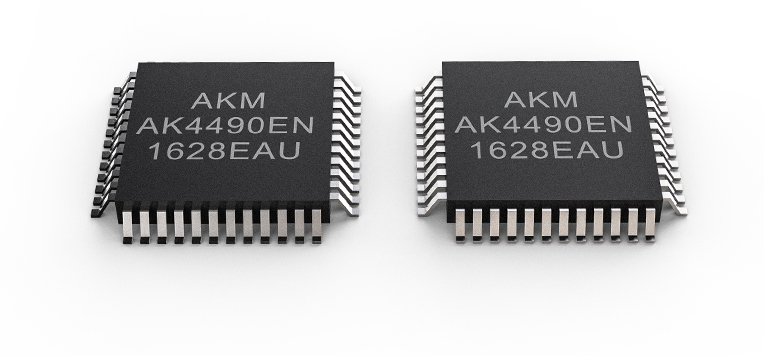مشغل الموسيقى والمعالج الصوتي عالي الجودة FiiO M9 من فييو
المنتجات المقترحة
منتجات شاهدها عملاء آخرون
معاينة موقع سماعة تك
تفاصيل المُنتج
- Type: High-Resolution Audio Player
- Dimensions: 60mm*106mm*13.3mm
- Weight: about 133g
- Volume control 120 steps +/- button control
- Recommended headphone impedance: 16~300Ω
- Equalizer: 10-band EQ (±6dB), 9 presets+custom preset
- Treble control: N/A
- Bass boost: N/A
- Balance control: ±5dB
- Gain control: L/H
- USB DAC: Asynchronous 192kHz/32bit
- USB Audio: DSD64/128,DoP/D2P
- Display size: 3.2 inches (8cm)
- Display type: LG IPS screen
- Resolution: 480×800
- Touchscreen: 5-finger multi-touch
- RAM: 768MB
- ROM: 4GB
- Storage expansion type Micro SD card ROM available to user 2GB
- Maximum storage expansion: Theoretically 2TB (only one micro SD card slot)
- Headphone out (PO) 3.5 mm headphone jack+2.5mm balanced headphone jack
- USB: Two-way TYPE C USB2.0(Charging/Data transmission/USB DAC/USB Audio)
- Line out (LO): 3.5 mm port (shared PO)
- SPDIF output: 3.5mm port (shared PO)
- WiFi: 2.4G,WiFi transmission supported
- Bluetooth:4.2
- USB connectivity: TYPE C Two-way USB2.0
- Bluetooth transmit: LDAC/aptX/aptX HD/SBC(Available when playing on M9 or using M9 as USB DAC)
- HWA connectivity (LHDC):Available when playing on M9 or using M9 as USB DAC
- Bluetooth receive: SBC/LDAC to be supported
- AirPlay: To be supported
- DLNA: Supports Windows for now, will support more in the future
- FLYLINK : To be supported
- USB power adapter: DC 5V/2A recommended
- Battery capacity: 2350mAh Li-polymer battery
- Charging time: <2h(DC5V/2A)
- Deep sleep time: 45 days
- Line output specifications
- THD+N:<0.002%(1kHz/10kΩ)
- SNR: ≥117dB (A-weighted)
- Frequency response: 5Hz~80 kHz(-3dB)
- Noise floor: <5uV
- Channel separation: >105dB
- Line level: 2V
- Headphone out specifications 1(3.5mm port)
- Output power 1 : ≥125mW(16Ω / THD+N<1%)
- Output power 2: ≥170mW(32Ω /THD+N<1%)
- Output power 3: ≥19mW(300Ω / THD+N<1%)
- Output impedance: <2Ω
- THD+N: <0.002%(1kHz/32Ω)
- Separation: >72dB
- Frequency response 5Hz~80 kHz(-3dB) Peak output voltage 6.5Vp-p
- SNR: ≥118dB (A-weighted)
- Noise floor: <5uV
- Headphone out specifications 2(2.5mm port)
- Output power 1:≥125mW(16Ω / THD+N<1%)
- Output power 2: ≥195mW(32Ω /THD+N<1% balanced turbo off), ≥220mW(32Ω /THD+N<1%,balanced turbo on)
- Output power 3: ≥24mW(300Ω / THD+N<1% balanced turbo off), ≥77mW(300Ω / THD+N<1%,balanced turbo on)
- Frequency response: 5Hz~80 kHz(-3dB)
- SNR: ≥113dB (A-weighted)
- Output impedance: <2Ω
- THD+N: <0.002%(1kHz/32Ω)
- Separation: >98dB
- Peak output voltage: 7.07Vp-p
- Noise floor: <10uV
- File format support - Lossless: DSD:DSD64,128(iso”“.dsf”,“.dff”), APE(Fast): 192 kHz/24 bit, APE(Normal): 192 kHz/24 bit, APE (High): 192kHz/24 bit, APE (Extra High): 48kHz/24 bit, APE (Insane): 48kHz/24 bit, FLAC: 192 kHz/24 bit, WAV: 192 kHz/64 bit, Aiff:192 kHz/24 bit, Aif:192 kHz/24 bit, WMA Lossless: 96 kHz/24 bit, Apple Lossless: 192 kHz/24 bit
- Lossless: MP3,OGG,WMA,AAC...
- Warranty: 1 year
ماذا في العلبة
• كابل USB
• كابل محوّل أحادي المحور
• بطاقة الكفالة
• دليل الاستخدام السريع
• حقيبة حفظ شفافة
الفيديوهات
مواصفات المُصنع
M9
The Ultimate in Versatility
Portable High-Resolution Audio Player
*Pictures are for illustration only, actual product may vary

A player that does it all
When developing the M9, we at FiiO saw that there wasn't any one player that combined all of the functions people want. Was there a player that could transmit the HWA/aptX/aptX HD/LDAC lossless Bluetooth codecs, even when used as a USB DAC? What about something that also contained a highly optimized audio circuit for excellent sound quality? Did any players also give the user an experience worthy of a flagship, capable of many features including Wi-Fi music streaming all in a slick interface? We sought to change that with the M9 – which does all of this and more.

The M9 uses Bluetooth 4.2 and supports virtually all Bluetooth formats including the high-resolution ones for your ultimate listening pleasure, including: 24-bit aptX HD (also backwards compatible with aptX), LDAC, and HWA.
Bluetooth audio unleashed with full format support
As a Bluetooth transmitter: LDAC/aptX/aptX HD/SBC (both natively from the player and through USB DAC)
As a Bluetooth receiver: SBC (LDAC to be added with software updates)

The two AK4490EN DACs employed in the M9 feature a high signal-to-noise ratio, exceptional dynamic range, and low distortion – making for a precise yet exciting sound signature.
Dual AK4490EN DACs for superb decoding performance

Built-in dedicated FPGA with DSD128 hardware decoding
Inside the M9 is a high-performance A3P030 FPGA, responsible for ensuring your music (whatever sample rate) is played back accurately by stabilizing digital clock signals. The FPGA also decodes DSD64/128 in hardware, which the M9 supports in ISO/DFF/DSF formats.

Eight-layer HDI PCB ensures excellent sound quality
For the first time, in the M9 FiiO uses an eight-layer HDI (High Density Interconnect) PCB with a thickness of only 0.08mm. While the M9 PCB is more complex than the one in the M7, it also allows more components to be integrated into a smaller space, leading to a smaller PCB and a smaller device overall. Combined with the fact that the M9 PCB is L-shaped, similar to modern smartphones, and you have a recipe for outstanding sound quality.


The TI OPA1612 is used as the LPF, while the TI OPA1622 serves as the current buffer. To achieve single-ended and balanced output, there are two OPA1622 op-amps used that provide up to 77mW* of power under a 300Ω load.
Specially-designed audio circuit with balanced and single-ended outputs
*Under balanced output
 BHD
BHD JOD
JOD KWD
KWD LBP
LBP OMR
OMR QAR
QAR SAR
SAR USD
USD
































